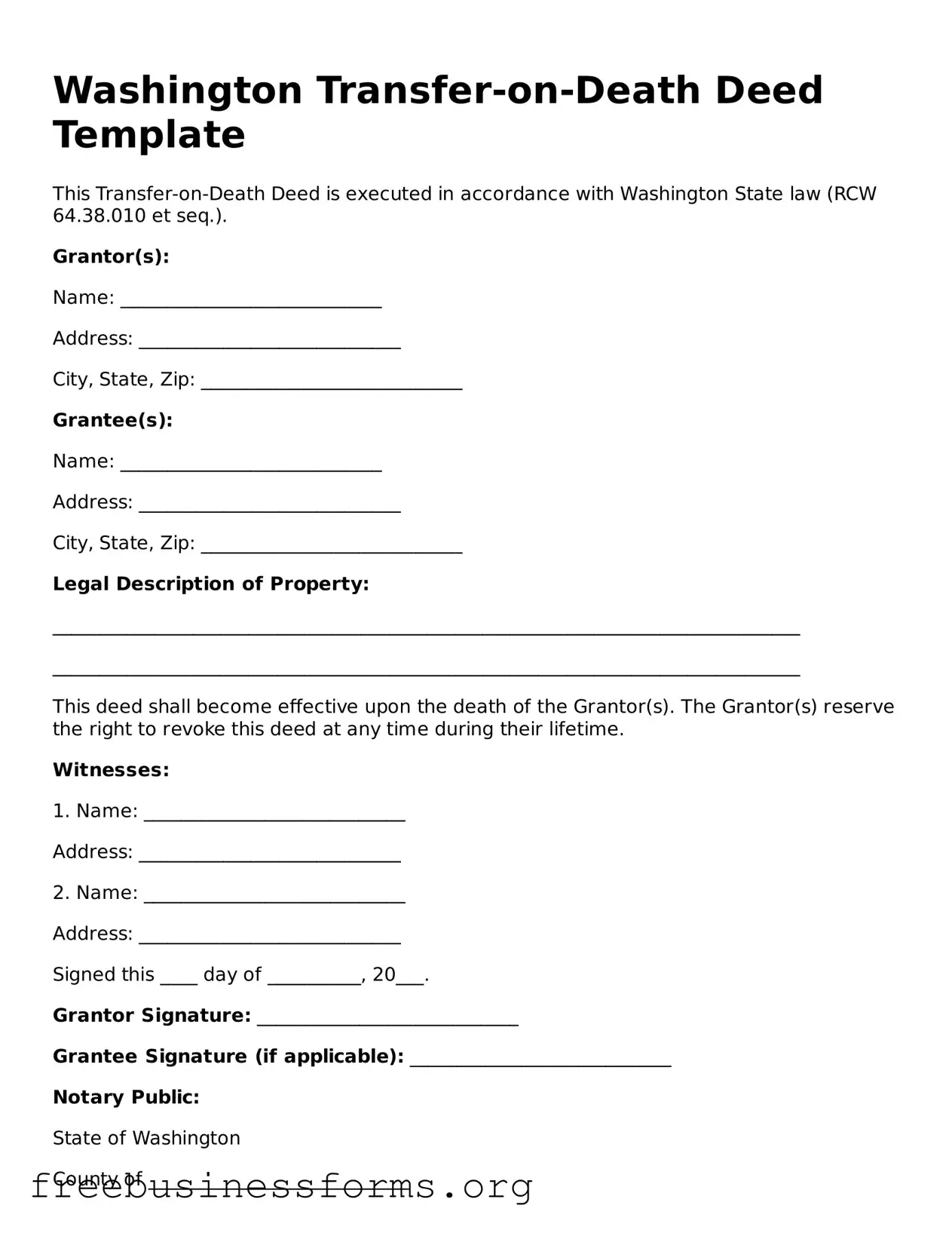Washington Transfer-on-Death Deed Template
This Transfer-on-Death Deed is executed in accordance with Washington State law (RCW 64.38.010 et seq.).
Grantor(s):
Name: ____________________________
Address: ____________________________
City, State, Zip: ____________________________
Grantee(s):
Name: ____________________________
Address: ____________________________
City, State, Zip: ____________________________
Legal Description of Property:
________________________________________________________________________________
________________________________________________________________________________
This deed shall become effective upon the death of the Grantor(s). The Grantor(s) reserve the right to revoke this deed at any time during their lifetime.
Witnesses:
1. Name: ____________________________
Address: ____________________________
2. Name: ____________________________
Address: ____________________________
Signed this ____ day of __________, 20___.
Grantor Signature: ____________________________
Grantee Signature (if applicable): ____________________________
Notary Public:
State of Washington
County of ____________________________
On this ____ day of __________, 20___, before me, a Notary Public in and for the state of Washington, personally appeared ____________________________, known to me to be the person(s) whose name(s) are subscribed to this instrument, and acknowledged that they executed the same for the purposes therein contained.
Notary Public Signature: ____________________________
My commission expires: ____________________________
